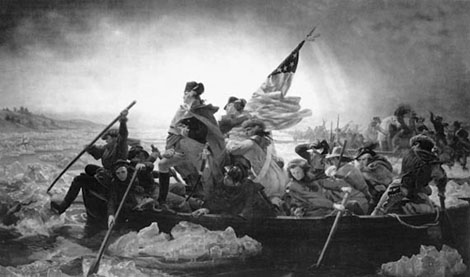1. Paintings offered distorted views on the events of the Revolution and the war. The war paintings were glorified and did not showcase the brutality or the deaths of the soldiers. Paintings usually did not depict a battle scene, the closet one to a battle scene did not show anyone firing a shot or wielding a bayonet. The paintings were sanitized images of the war compared to the real photographs from the Civil War which showed the mangled bodies and careworn soldiers.
2. The Union and Confederate soldiers of the Civil War carried rifle that had an effective range nearly six times that of the muskets the men in the Continental Army carried. Although the rifles were less effective in the Revolution they were still deadly effective in killing and harming other soldiers.
3. The 18th century armies had to fight at close range due to the ineffectiveness of their rifles. Most of the fights frequently ended in bayonet charges and brutal hand to hand combat. These caused massive amounts of casualties for both sides. Armies fought in the open at a distance that is no greater than that from home plate to second base on a baseball field.
4. There was a lot of savagery in the war, especially in the South in 1780-81. Loyalist calvarymen, led by Colonel Banastre Tarleton, went on a rampage after the surrender of the Virginia Continentals in Waxhaws, S.C and slaughtered close to 75% of the rebels with their swords. The rebels were unarmed. This is often called the Waxhaw or Tarleton Massacre.
5. The Continental cavalry seeked revenge for all the massacres done by the British. In March 1781, the Continental cavalry, led by Colonel Henry Lee, killed up to ninety Loyalists from the Loyalist cavalry in Hillsborough, N.C. The Loyalists who were not killed were wounded badly while Lee's soldiers were not harmed and Lee did not lose a single man.

No comments:
Post a Comment